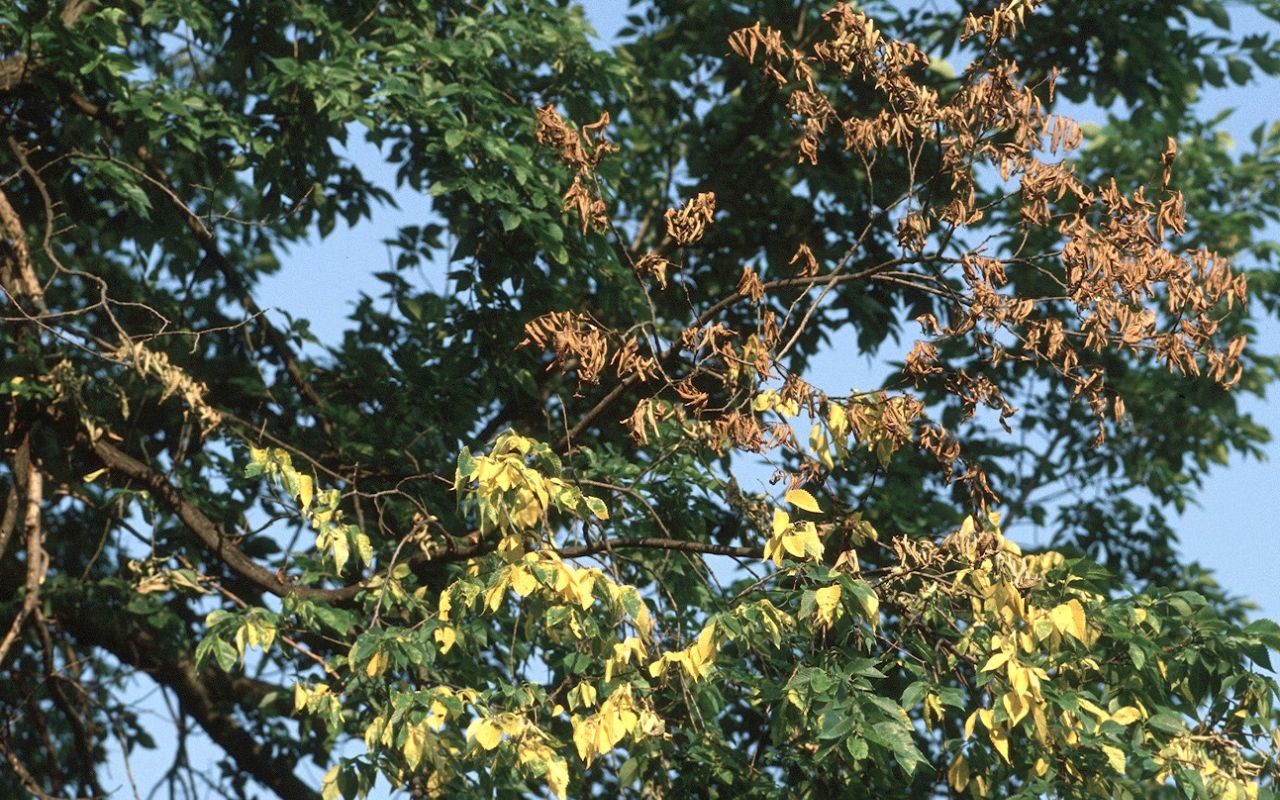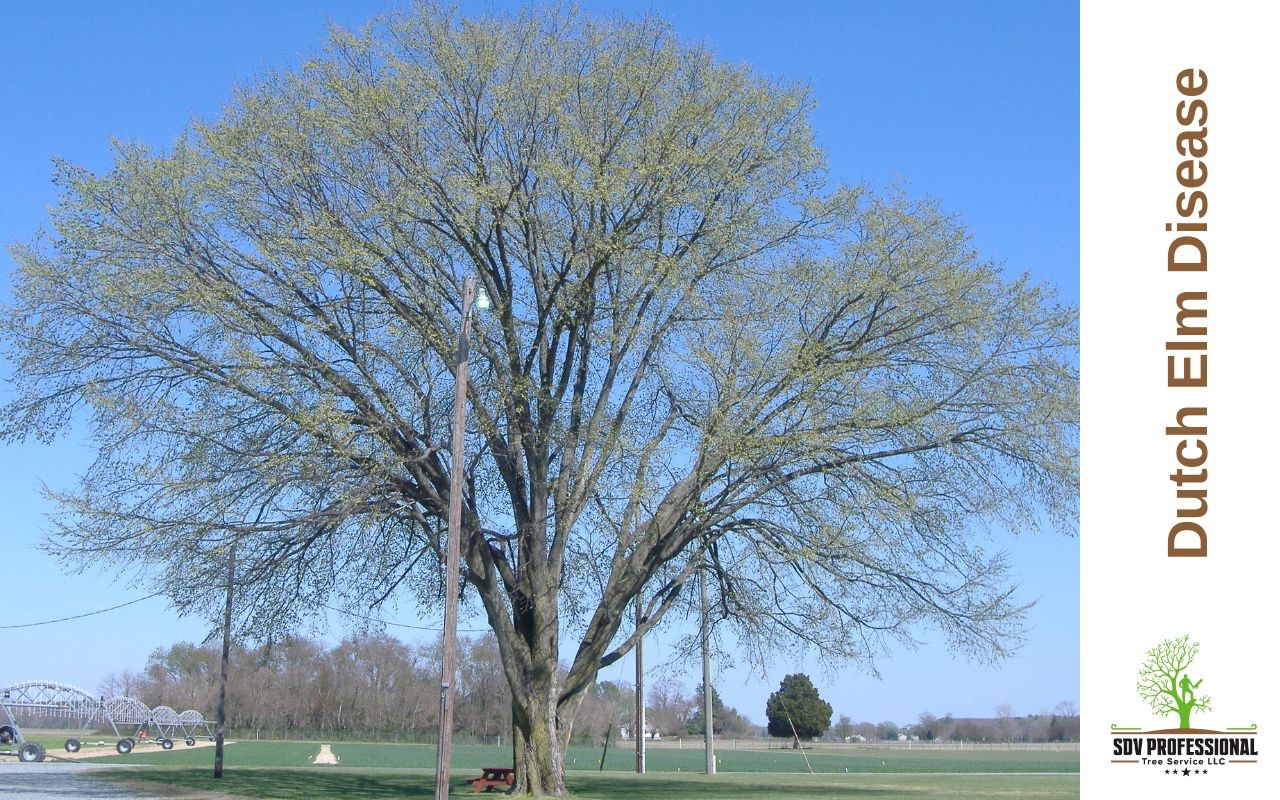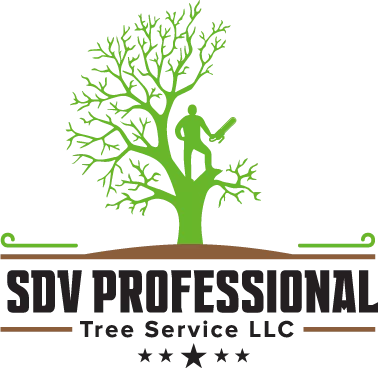
Elm Disease: Symptoms and Treatment
Discover the Symptoms of Dutch Elm Disease to avoid this problem with your trees! Dutch elm disease (DED) is a devastating fungal infection that affects the leaves, branches, and trunk of elm trees. It is caused by two species of fungi, Ophiostoma ulmi, and Ophiostoma novo-ulmi, which are spread primarily by the native elm bark beetle. The disease has caused significant loss of elm trees across North America and Europe since its introduction in the early 1900s.
Symptoms of Dutch Elm Disease
The most obvious symptom of DED is wilting and yellowing of leaves on one side of an otherwise healthy tree. As the infection spreads, the leaves on the affected branches will curl and turn brown. In some cases, brown streaks may also appear in the wood of infected branches. In advanced stages, an infected tree may become completely defoliated.
Treatment of Dutch Elm Disease

The most effective treatment for DED is prevention. It includes planting only healthy elm trees, pruning dead or diseased branches immediately, and avoiding the introduction of possible vectors like elm bark beetles.
Once a tree has been infected, the best way to try to save it is to remove any affected limbs before they have time to spread the disease further. In some cases, fungicides may also be applied to help protect the tree. If the tree is severely infected, removal and destruction of the tree may be necessary.
To help protect elms from future infections of Dutch Elm Disease, it is essential to plant only healthy, disease-resistant trees. It is also important to regularly monitor for any signs of the disease and take quick action if it appears. Regularly pruning dead or diseased limbs can also help reduce the infection’s spread.
Finally, avoid introducing elm bark beetles into the environment, as they are the main carriers of the fungus that causes Dutch Elm Disease. We can help protect elm trees from this devastating disease by taking these steps. With the proper care and attention, our beloved elms can continue providing us with beauty and shade for many years.
How to Avoid this Disease in Your Trees?

One of the best ways to avoid Dutch elm disease in your trees is to plant resistant or tolerant varieties. Many types of new hybrid elms have been developed, which are much more resilient against the disease. It may be a good idea to contact a local tree specialist to determine which type is suitable for your area.
Inspect Your Trees Regularly
Another vital way to avoid Dutch elm disease is by inspecting your trees regularly and pruning them properly. Prune dead or diseased branches as soon as they appear, and remove any infected wood from the site immediately. Make sure to burn or dispose of this wood away from your trees; don’t just throw it in the woods where other elms may be infected.
Water Your Trees Correctly
It is also a good practice to ensure your trees are getting all their necessary nutrients and water. Watering trees can help them stay healthy and strong, which will give them a better chance of fighting off Dutch elm disease. Additionally, mulching around the base of your tree will help retain moisture and keep the surrounding soil healthy.
Avoid Activities that will Injure Your Trees
In addition to regular maintenance, you can also help prevent Dutch elm disease by avoiding activities that will injure your trees. If construction is done near your trees, make sure any excavation or digging does not damage their roots. It’s also important to never plant any elms in areas where other elm trees have died of Dutch elm disease, as this increases the chances of the disease spreading.
Get Professional Help
If you notice any changes in your tree’s health, such as wilting leaves or abnormal discoloration, contact an arborist for help. An arborist can diagnose and treat diseases early on before they become too hard to manage. Additionally, it is essential to prune your elms regularly and dispose of the pruned wood properly to prevent disease spread. Pruning should be done during the winter while the tree is dormant, as this reduces stress on the tree and allows for better healing.
Plant Resistant Varieties of Elms
Finally, consider planting resistant varieties of elms, as these trees are less prone to disease. It is also important to avoid planting elm trees too close together and instead space them out adequately. Thus, air can circulate freely between the branches. By following these steps, you can help reduce the chances of your elm tree catching a deadly disease and spreading it to other nearby trees.
Thank you for reading! Your efforts in helping protect elm trees can make a big difference in preserving the beauty of our environment. Let’s keep our elm trees healthy and strong!
Now that you learn about the Symptoms of Dutch Elm Disease, you can protect our treasured elm tree population. Together, we can help ensure that these majestic trees will be
